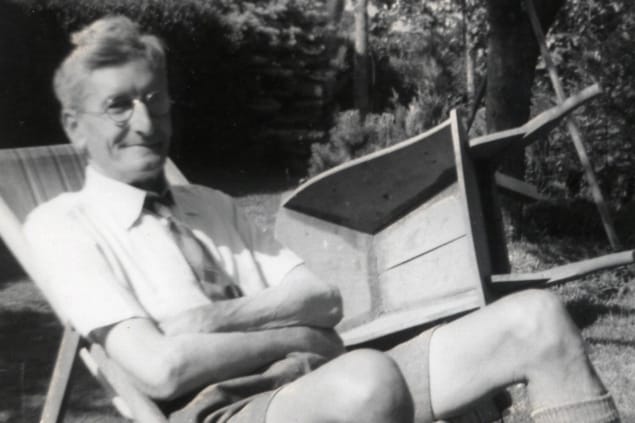The unconventional scientist who predicted that rising carbon dioxide levels would change the climate
Sidney Perkowitz on Guy Callendar, the engineer who demonstrated the link between rising carbon-dioxide concentration and temperature but was dismissed by meteorologists as a “non-expert”

With the United Nations Climate Change Conference (COP26) coming up next month, it is strange to think that less than 100 years ago global warming was not widely accepted, even among experts. In fact, in 1938 Sir George Simpson, a leading meteorologist, dismissed the link between rising carbon-dioxide (CO2) concentration and temperature as “rather a coincidence”. The correlation had been shown in a paper by an author outside the conventional scientific community, so, for good measure, Simpson added that a non-expert could not properly appreciate how atmospheric circulation affects the absorption of radiation. The non-expert in question was Guy Callendar, a British steam engineer doing his own atmospheric research at home.
But climate science has a long and multidisciplinary history, with contributions from scientists both within and outside academia. Many of the basics were set by eminent 19th-century figures, notably the French mathematical physicist Joseph Fourier, the Irish physicist John Tyndall, and the Swedish Nobel prize-winning physical chemist Svante Arrhenius. Other little-known researchers, however, made essential progress too.
One was Eunice Foote, a 19th-century American scientist. In 1856 her well-designed home experiment gave the first evidence that atmospheric CO2 is highly effective in absorbing heat from the Sun, leading her to predict that an increase in CO2 would warm the Earth. Three years later, Tyndall showed that the CO2 absorption occurs at infrared wavelengths. Then in 1896, preliminary calculations by Arrhenius hinted that humanity’s burning of fossil fuels could raise CO2 levels and warm our planet. This was finally validated in 1938, when Callendar first carried out effective climate modelling.
Callendar was born in 1898. His father, Hugh, was a talented experimental physicist who was dubbed a “universal genius” by Ernest Rutherford. Indeed, Callendar’s scientific development was greatly influenced by his father. Writing in the 2007 book The Callendar Effect, James Rodger Fleming explains how the young Callendar was raised in a household full of “books and a vast array of technical gadgets”. At age 17, he began working in his father’s lab at University College London, earned a certificate in mechanics and mathematics, then continued working with him. When his father died in 1930, Callendar became a successful steam engineer. He also pursued his interest in meteorology by using the varied physics he had learned during his apprenticeship to study whether human activities affect the Earth’s temperature.
Callendar analysed historical global measurements of temperature, of atmospheric CO2, and the use of fossil fuels
Callendar’s 1938 paper “The artificial production of carbon dioxide and its influence on temperature” (Q. J. Roy. Met. Soc. 64 223) analysed historical global measurements of temperature, of atmospheric CO2, and the use of fossil fuels. Over the previous 50 years, he found, global temperatures had increased by 0.05 °C per decade, and atmospheric CO2 had grown to a value of 289 parts per million due to the burning of fossil fuels, which had added 150,000 million tonnes of CO2 to the atmosphere. Only a quarter of this was absorbed in the natural carbon cycle, mostly by diffusion into the oceans. Callendar calculated the infrared absorption of the remaining excess CO2 within a layered vertical model of the atmosphere. This showed that anthropogenic CO2 accounted for two-thirds of the long-term warming, and that a doubling of CO2 would raise global temperatures by 2 °C.
These results were not initially well received. Simpson, who dismissed the apparent correlation as a coincidence, was just one of many critics in the scientific community. Peer reviewers questioned the validity of Callendar’s calculations and historical data. Perhaps they were influenced by the fact that he was not an establishment scientist but a working engineer doing his research alone and at home, and by his holistic analysis across scientific boundaries. But Callendar cogently responded to the scientific questions and produced three dozen more papers before his death in 1964.
Other researchers further explored climate change with new measurements of temperature, infrared absorption by CO2 (where Callendar’s own work contributed), and the carbon cycle. As scientists began recognizing the role of anthropogenic CO2, it became clear that Callendar’s 1938 paper had first established the connection. In 2013 climate scientists Ed Hawkins and Philip Jones called it a “landmark study” and Callendar’s achievements “remarkable” (Q. J. Roy. Met. Soc.
Of course, nobody is right about everything. Callendar’s speculations about the effects of warming missed the mark – he optimistically believed that rising temperatures would benefit humanity, by reducing glaciation and improving crop growth. Nevertheless, his contributions were key to accelerating the realization that warming was actually happening.
In 2016 another reconsideration (Endeavour 40 178) identified Arrhenius and Callendar as pioneers in the modern modelling of global warming. Callendar’s biographer characterizes him as a modest person, but I suspect he would be pleased that his unusual and excellent physics training finally led to his deserved recognition as a climate science innovator.
No comments:
Post a Comment